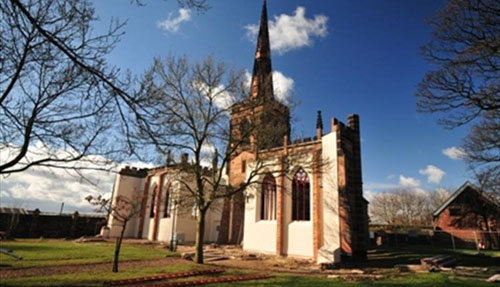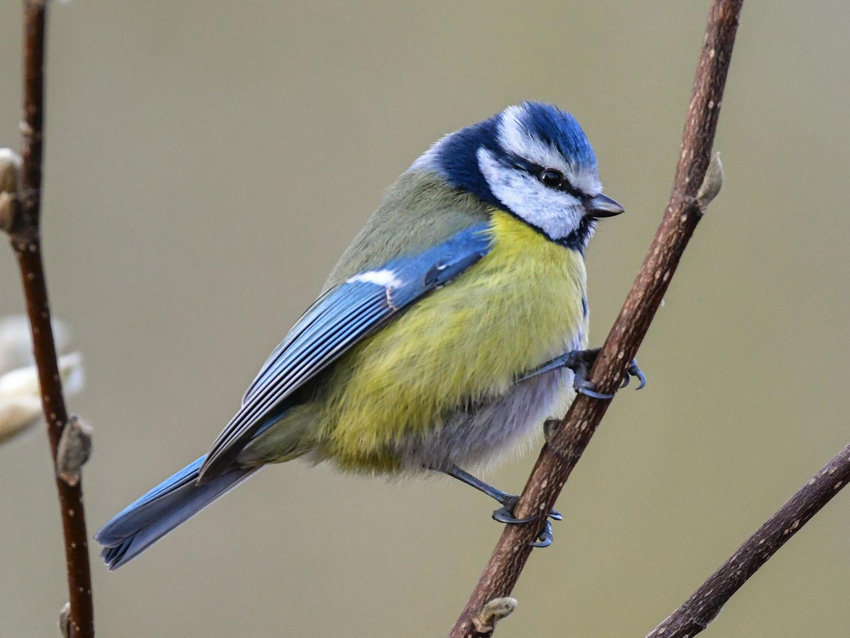




Back to the Merseyside Page

- The Royal Connection
- Merseyside Eats
- Owlbut's Birdwatch
- Merseyside VIPs
 Birkenhead Priory is the oldest
standing building on Merseyside. It was founded in about 1150AD and the monks who lived there not only spent their lives in prayer and meditation but also
looked after weary travellers who might pass by. They also operated the first ferry crossing of the River Mersey, though they didn't write a song about it.
Birkenhead Priory is the oldest
standing building on Merseyside. It was founded in about 1150AD and the monks who lived there not only spent their lives in prayer and meditation but also
looked after weary travellers who might pass by. They also operated the first ferry crossing of the River Mersey, though they didn't write a song about it.
In 1275 and again in 1277 the priory was visited by Edward I, the famous conqueror of Wales. In 1330 Edward III gave permission for the monks to
build a hostel and this was known as the Great Hall. By 1518 there were 7 monks at the priory, up from 5 in the previous hundred years. After Henry VIII dissolved the
monasteries in 1536 the land was bought by Ralph Worsley and after he died, it passed into the hands off his daughter Alice.
A manor house was built on the site of the Great Hall and then rebuilt, after the civil war, in about 1660. Birkenhead, which only had a population of
110 in the first census of 1801 began to grow and by 1891 it was almost 100,000.
The priory's chapter house remains a church and is still in use for services. The first parish church, St Mary's, was built in the grounds of the priory
in 1821. Expansion of Birkenhead port in the 1960s meant much of the church's graveyard was lost and in 1974 the church closed and then it was knocked down for
safety reasons. Only the old church tower and parts of the outer walls now remain.
![]() Back to the top
Back to the top
Liverpool is one of the six largest cities
in England. People who live there are known as Liverpudlians or Scousers. The word scouse comes from word lobscouse which is a type of stew that was brought to
Liverpool by Norwegian sailors. The stew, now also known as scouse, has been popular on Mereseyside ever since.
To be honest it is not that dissimilar to a Lancashire Hotpot with essential ingredients of potatoes, carrots, onion and chunks of meat. A survey by The
Liverpool Echo in 2018 confirmed that for the majority of cooks the basic ingredients are as above though some said you should add a stock cube, unlikely to have
been around in the old days. The choice of meat varied but by 2-to-1, beef beat lamb.
The ingredients are then simmered together for several hours. It is really a dish made of leftovers and so, while the ingredients we talked about above
are said to be traditional, you can basically add whatever you have around or whatever vegetables are in season. Scouse is traditionally served with pickled red
cabbage or beetroot and a slice of crusty bread which, I'm guessing, is pretty good for mopping up the gravy afterwards.
![]() Back to the top
Back to the top
The Blue Tit is one of the prettiest and most common birds in England. They can be found anywhere and everywhere. In winter
there are over 15 million birds in the UK. There are five other members of the tit family seen in England and these are the coal, crested, great, marsh and willow
tit but I think the blue tit is the most beautiful. Its feathers are black, blue, green, grey, white and yellow with blue/grey legs and a short, thin, black beak.
Blue tits will like to visit any bird feeder you may have in your garden. They eat nuts, seeds, insects and also caterpillars.
Blue tits start nesting by the end of March and like nest boxes but can also nest in cracks in trees and walls. They only lay eggs once a year, laying
between 7 and 14 eggs at the end of April. It takes about 15 days for the chicks to emerge.
Blue tits are only 12 cms in length, have a wingspan of just 18 cms and weigh 11 grams. Small but really pretty.

Seven random people who were born in Merseyside in the last 100 years:-
All Four Members of The Beatles (Musicians), Glenda Jackson (Actor and Politician), the late Robert Runcie (Ex Archbishop of Canterbury),
Mel Chisholm (Singer, Spice Girl, etc), the late Ken Dodd (Comedian), the late Cilla Black (Singer, TV Presenter) and Johnny Vegas (Comedian)
![]() Back to the top
Back to the top

